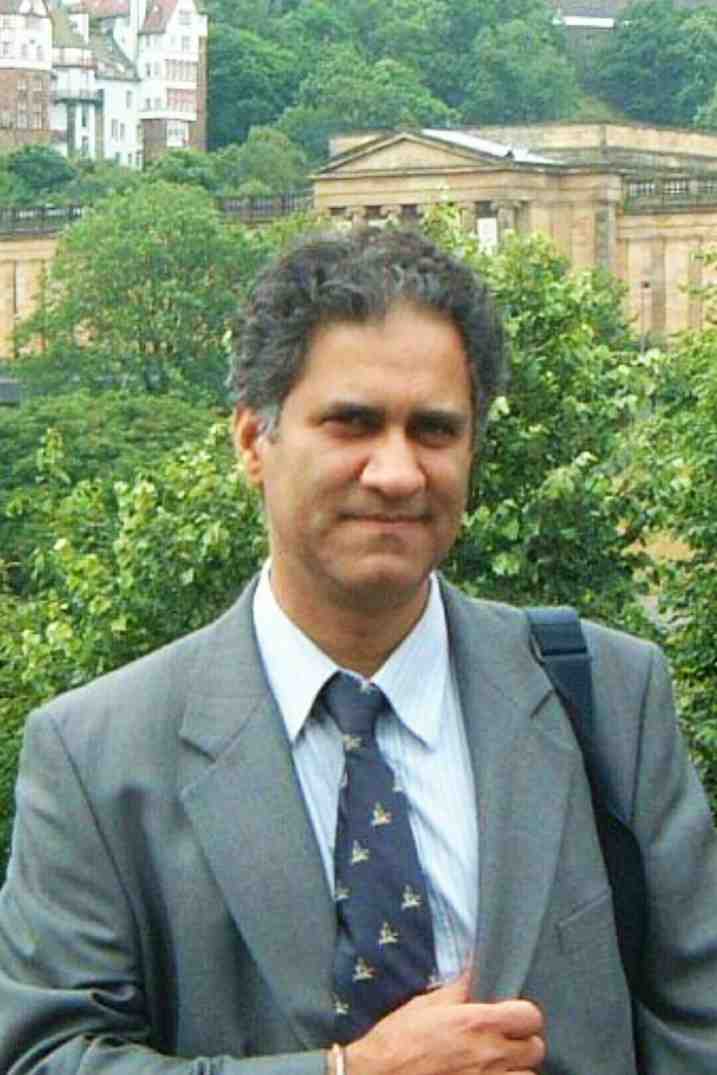AUCTORES
Globalize your Research
Review Article | DOI: https://doi.org/10.31579/2639-4162/261
Department of Biomedical and Laboratory Science, Africa University, Zimbabwe.
*Corresponding Author: Emmanuel Ifeanyi Obeagu, Department of Biomedical and Laboratory Science, Africa University, Zimbabwe.
Citation: Emmanuel I. Obeagu (2025), Hematologic and Immunologic Crossroads: HIV in Sickle Cell Disease Patients, J. General Medicine and Clinical Practice, 8(4); DOI:10.31579/2639-4162/261
Copyright: © 2025, Emmanuel Ifeanyi Obeagu. This is an open-access article distributed under the terms of the Creative Commons Attribution License, which permits unrestricted use, distribution, and reproduction in any medium, provided the original author and source are credited.
Received: 11 March 2025 | Accepted: 27 March 2025 | Published: 08 April 2025
Keywords: hiv; sickle cell disease; hematologic complications; immunologic responses; co-infection
The coexistence of HIV and sickle cell disease (SCD) presents unique clinical challenges, as both conditions significantly impact hematologic and immunologic systems. HIV, by causing immune suppression, exacerbates the complications of SCD, including increased frequency and severity of vaso-occlusive crises, infections, and organ damage. The pathophysiological interplay between these two diseases complicates diagnosis, treatment, and overall management. This review explores the hematologic and immunologic crossroads that occur in HIV-positive SCD patients, discussing how each disease influences the progression and clinical manifestations of the other. The immunosuppressive effects of HIV compound the already heightened inflammatory state present in SCD, leading to a greater risk of infections, organ failure, and accelerated progression of SCD-related complications. The chronic inflammation and endothelial dysfunction caused by SCD, coupled with the immune dysfunction associated with HIV, exacerbate the severity of both conditions. Additionally, certain medications used in the treatment of HIV, such as antiretroviral therapy (ART), can interact with SCD treatments like hydroxyurea, leading to compounded hematologic challenges. This necessitates careful consideration of therapeutic regimens to minimize adverse interactions and optimize patient care.
The intersection of HIV and sickle cell disease (SCD) in affected individuals presents a significant clinical challenge due to the complex interplay between the two conditions. Both HIV and SCD are chronic diseases that, when present together, increase the risk of severe complications, including enhanced inflammatory responses, infections, and organ damage. Understanding the combined pathophysiology of HIV and SCD is crucial for improving clinical management and patient outcomes. The need for integrated care approaches that address the unique challenges faced by co-infected patients is paramount, as managing each condition individually may not be sufficient to provide optimal care. [1-2]. Sickle cell disease is an inherited hemoglobinopathy characterized by the presence of abnormal hemoglobin (HbS), which leads to the deformation of red blood cells into sickle-shaped forms under low oxygen conditions. This deformity disrupts normal blood flow, causing vaso-occlusive crises, hemolysis, and end-organ damage. The chronic inflammation associated with SCD also predisposes patients to infections, particularly due to the damage to the spleen and impaired immune responses. HIV, a viral infection that leads to progressive immune suppression by targeting CD4+ T cells, further complicates the immune landscape in individuals with SCD. The combination of these two diseases results in compounded hematologic and immunologic dysfunction, creating a distinct pathophysiological profile. [3-5]. HIV’s effects on the immune system can exacerbate the already compromised immune function in individuals with SCD. The immune suppression caused by HIV infection makes SCD patients more susceptible to opportunistic infections, which can worsen their clinical course. Moreover, HIV can accelerate the progression of SCD-related complications, such as organ damage, vasculopathy, and chronic pain. Conversely, the chronic inflammation and oxidative stress seen in SCD contribute to the exacerbation of HIV infection, impairing the body’s ability to control viral replication effectively. This reciprocal impact underscores the need for a comprehensive approach to managing both diseases simultaneously.[6]
In addition to the immune-related challenges, there are significant hematologic considerations when managing co-infected patients. Antiretroviral therapy (ART), which is the cornerstone of HIV treatment, can have hematologic side effects, including bone marrow suppression, anemia, and neutropenia. This complicates the management of SCD, where maintaining adequate red blood cell levels and managing sickle cell-related crises are critical. Furthermore, some ART drugs may interact with medications commonly used to treat SCD, such as hydroxyurea, leading to adverse effects or reduced efficacy. Thus, finding the right balance in the therapeutic regimen requires careful monitoring and adjustment based on each patient’s unique needs. [7-9]. Patients with both HIV and SCD face significant clinical challenges when it comes to the prevention and treatment of infections. SCD patients already have a heightened risk of infection due to impaired immune responses and organ damage, particularly from splenic dysfunction. HIV infection further weakens the immune system, making it more difficult for these patients to fight infections. This increased vulnerability to infections, including pneumonia, urinary tract infections, and fungal infections, requires careful management to prevent life-threatening complications. Vaccination, prophylactic antibiotics, and early intervention with antimicrobial agents become even more essential in these individuals. [10-12]. Given the complexity of managing both HIV and SCD, a multi-disciplinary approach is essential. This involves collaboration between hematologists, infectious disease specialists, immunologists, and other healthcare professionals to develop personalized treatment plans. Coordination of care is key to managing the myriad complications that can arise in co-infected individuals, including pain crises, anemia, organ failure, and the adverse effects of drug interactions. The goal of treatment is not only to manage HIV viral load but also to reduce the frequency and severity of SCD-related crises, improve quality of life, and prevent long-term complications. [13-14].
Pathophysiology of HIV in Sickle Cell Disease
The pathophysiology of HIV in sickle cell disease (SCD) involves a complex interplay between the immunologic and hematologic dysfunctions inherent to each condition, exacerbating the overall clinical picture. Both HIV and SCD lead to chronic inflammation and immune dysregulation, but their mechanisms of action differ, compounding the severity of symptoms when they co-occur. In SCD, the abnormal sickling of red blood cells induces vaso-occlusive episodes, hemolysis, and endothelial dysfunction, which triggers an inflammatory cascade. The immunological effects of HIV, particularly CD4+ T-cell depletion, lead to progressive immunosuppression, creating an environment where infections and disease progression are more difficult to manage. The presence of HIV in patients with SCD significantly increases the risk of infections, further complicating the clinical course and accelerating organ damage.[15-17]. In individuals with SCD, the chronic inflammatory state results from the repeated episodes of hemolysis and vaso-occlusion. Hemolysis, which involves the premature breakdown of red blood cells, releases free hemoglobin into circulation, contributing to oxidative stress and endothelial damage. This cascade of events heightens the inflammatory response and causes microvascular injury. Additionally, chronic hypoxia, a hallmark of SCD, results from the impaired oxygen delivery caused by the sickling of red blood cells, leading to further endothelial dysfunction and vasculopathy. This inflammatory milieu and endothelial damage in SCD predispose patients to higher susceptibility to infections, especially respiratory and urinary tract infections, which are commonly seen in individuals with HIV. [18-19].
HIV infection compounds this existing inflammatory and immune dysfunction. HIV specifically targets CD4+ T lymphocytes, which play a key role in immune defense, especially in the presence of pathogens. As the infection progresses, the depletion of CD4+ T cells weakens the immune system and impairs the body's ability to mount an effective immune response against infections. This immune deficiency leaves HIV-positive individuals with SCD more vulnerable to opportunistic infections, including those that affect the lungs, kidneys, and blood vessels. Furthermore, the presence of HIV promotes a generalized inflammatory state, which exacerbates the systemic inflammation seen in SCD. The cytokines and chemokines involved in HIV replication, such as TNF-alpha, IL-6, and IL-1, contribute to the chronic inflammation in SCD, potentially leading to more severe manifestations of both diseases. [20-22]. The interaction between HIV-induced immunosuppression and the inflammatory processes of SCD further increases the risk of serious complications such as acute chest syndrome, stroke, and renal impairment. Both conditions lead to endothelial dysfunction and can cause significant vasculopathy, which predisposes patients to ischemic events. The compounded inflammatory state accelerates the progression of organ damage, particularly in the lungs, kidneys, and liver. In the lungs, HIV-associated pulmonary complications such as pneumocystis pneumonia and tuberculosis can worsen the hypoxia and respiratory distress commonly seen in SCD patients. Similarly, renal complications, including HIV-associated nephropathy (HIVAN), can be exacerbated by the already impaired renal function in SCD. [23-25]. Therapeutically, the combination of HIV and SCD presents unique challenges. Antiretroviral therapy (ART), which is crucial for managing HIV infection, can interact with drugs used to treat SCD, such as hydroxyurea, potentially leading to adverse effects. Additionally, ART medications may cause hematologic side effects, such as neutropenia and anemia, which further complicate the hematologic management of SCD. Thus, understanding the pathophysiological mechanisms of HIV in SCD patients is essential for tailoring therapeutic approaches and mitigating potential drug interactions and side effects. [26-27].
Clinical Manifestations and Diagnosis of HIV in Sickle Cell Disease
The clinical manifestations of HIV in patients with sickle cell disease (SCD) are multifaceted and represent a complex interaction between the hematologic, immunologic, and infectious complications of both conditions. Individuals with SCD are already predisposed to a range of complications, including anemia, vaso-occlusive crises, organ damage, and chronic pain. When HIV is introduced into this already compromised clinical landscape, the resulting symptoms and complications are often more severe and difficult to manage. Both diseases contribute to a heightened inflammatory state, immunosuppression, and increased susceptibility to infections, further complicating the clinical presentation. [28-29]. HIV-positive SCD patients may present with several overlapping clinical features, making diagnosis more challenging. Symptoms of HIV infection, including fever, weight loss, fatigue, and night sweats, can overlap with those of SCD-related complications such as vaso-occlusive pain crises, chronic anemia, and organ damage. The presence of HIV can exacerbate these symptoms, causing more frequent and severe episodes of vaso-occlusion, as well as increased susceptibility to opportunistic infections such as pneumonia, urinary tract infections, and tuberculosis. Furthermore, chronic inflammation seen in both diseases may lead to progression in organ damage, particularly to the kidneys, lungs, and heart. These multi-systemic effects can result in a progressive decline in the patient's quality of life, with frequent hospitalizations, difficulty managing pain, and increased rates of morbidity and mortality [30-31].
In addition to the complications associated with the diseases themselves, HIV infection in SCD patients can also increase the risk of specific HIV-related conditions, such as HIV-associated nephropathy (HIVAN), which is characterized by progressive kidney dysfunction. HIVAN can manifest as proteinuria, edema, and an increase in serum creatinine levels, mimicking the renal manifestations of sickle cell nephropathy. Furthermore, the heightened inflammatory response caused by both HIV and SCD may contribute to the development of acute chest syndrome (ACS), a life-threatening complication of SCD that is associated with respiratory distress, hypoxia, and chest pain. In HIV-positive SCD patients, the risk of ACS is increased due to the dual effects of impaired immune function and the ongoing pulmonary complications of HIV.32-34 The diagnosis of HIV in patients with SCD can be more complex, as many clinical symptoms overlap between the two conditions. Routine screening for HIV is essential in SCD patients, particularly in regions with high prevalence of HIV. HIV testing typically involves serologic assays such as enzyme-linked immunosorbent assay (ELISA), followed by confirmatory tests like the Western blot or HIV-1 RNA PCR test. In individuals with established SCD, monitoring HIV viral load and CD4+ T cell count is necessary to assess the degree of immune suppression and to guide antiretroviral therapy (ART) initiation. SCD patients who present with worsening anemia, increased frequency of pain crises, or organ failure should be screened for HIV, particularly in areas with high HIV burden. Additionally, special attention should be given to the renal function in HIV-positive SCD patients, as kidney involvement can often be subtle and can present with early signs of proteinuria or elevated creatinine levels.35-37
As the clinical features of HIV and SCD often overlap, a comprehensive and thorough diagnostic approach is crucial to differentiate between the two conditions and guide appropriate treatment. Imaging studies, such as chest X-rays, CT scans, and echocardiograms, may be used to assess organ involvement and rule out other causes of symptoms. For example, in suspected cases of acute chest syndrome (ACS), chest X-rays can help identify infiltrates and signs of infection, while pulmonary function tests can assess lung function. Renal function tests, including urine analysis, creatinine clearance, and kidney biopsies, are essential in diagnosing HIVAN and differentiating it from other forms of renal dysfunction in SCD.38 Moreover, close monitoring of inflammatory markers such as C-reactive protein (CRP), interleukins, and tumor necrosis factor (TNF)-alpha can help assess the degree of systemic inflammation, which is a hallmark of both HIV and SCD. This multi-pronged diagnostic approach can help physicians make timely interventions and adjust treatment plans to manage the dual burden of both conditions effectively.39
Immune Response in HIV and Sickle Cell Disease
The immune response in individuals with both HIV and sickle cell disease (SCD) is characterized by a complex interplay between immunosuppression, chronic inflammation, and dysregulated immune function. Both conditions independently lead to significant alterations in the immune system, but their coexistence in a single patient can result in exacerbated immune dysfunction, making the management of co-infected individuals particularly challenging. Understanding the immune responses in HIV and SCD is crucial for devising effective therapeutic strategies and improving patient outcomes.40 In HIV, the virus primarily targets and depletes CD4+ T cells, a central component of the adaptive immune response. As the disease progresses, the decline in CD4+ T cells leads to a weakened immune system, increasing susceptibility to opportunistic infections and impairing the body’s ability to mount effective immune responses. In addition to CD4+ T cell depletion, HIV infection also induces chronic immune activation, marked by elevated levels of pro-inflammatory cytokines such as tumor necrosis factor-alpha (TNF-α), interleukins (IL-6, IL-1), and interferons. This persistent inflammation contributes to the pathogenesis of several HIV-related complications, including cardiovascular disease, neurocognitive impairment, and chronic kidney disease. Moreover, the immune system’s ability to distinguish between pathogenic and self-antigens is impaired in HIV-infected individuals, leading to immune dysregulation and autoimmunity.41-42
Sickle cell disease, on the other hand, is associated with a heightened state of systemic inflammation due to repeated hemolysis, vaso-occlusive crises, and endothelial damage. Hemolysis releases free hemoglobin into circulation, which acts as an endogenous danger signal and activates immune cells, including monocytes, macrophages, and neutrophils. This activation results in the release of inflammatory cytokines, promoting a vicious cycle of inflammation that worsens vascular injury and contributes to organ damage. The immune response in SCD is further complicated by defective immune function, particularly in the context of recurrent infections, as sickle cells have a reduced ability to clear pathogens due to impaired splenic function and increased sequestration of white blood cells in the microvasculature. The combination of chronic hemolysis, endothelial dysfunction, and immune system defects leads to a persistent inflammatory state, which underpins many of the clinical manifestations of SCD, such as pain crises, stroke, and organ damage.43 When HIV and SCD co-occur, the immune responses from both diseases intersect in ways that exacerbate the overall immune dysfunction. HIV-related CD4+ T cell depletion compromises the adaptive immune response, while SCD-induced chronic inflammation heightens the activation of both innate and adaptive immune cells. This synergistic effect leads to a more profound immune dysregulation and increases the risk of both infections and autoimmune disorders in co-infected patients. HIV-related immunosuppression impairs the ability of the immune system to control the inflammatory burden caused by SCD, while the chronic inflammatory state in SCD exacerbates immune dysfunction in HIV-positive individuals. As a result, co-infected patients are at a higher risk of recurrent infections, particularly in the respiratory and genitourinary tracts, as well as opportunistic infections, including pneumonia, tuberculosis, and fungal infections. Additionally, the combined immune dysfunction may increase the risk of secondary autoimmune diseases, further complicating disease management.44
The chronic inflammation in both HIV and SCD also impacts immune responses in the context of vaccinations and the body’s ability to fight infections. In SCD, compromised immune function, particularly with regard to the spleen’s ability to filter pathogens, leads to increased susceptibility to pneumococcal and other encapsulated bacterial infections. In HIV, the depletion of CD4+ T cells impairs the ability to generate protective antibody responses to vaccines, which can be further diminished by the concurrent inflammation in SCD. Immunization strategies for co-infected patients must be tailored to address these immune deficiencies. For example, vaccination schedules may need to be adjusted to ensure optimal immune responses, and additional doses of vaccines, such as the pneumococcal vaccine, may be necessary to provide adequate protection.45 Therapeutic interventions in HIV and SCD also have significant effects on the immune system. Antiretroviral therapy (ART), while essential for managing HIV, can alter immune function in a variety of ways. ART has been shown to increase CD4+ T cell counts and decrease viral load, restoring some degree of immune competence. However, ART may not fully reverse the immune dysfunction caused by SCD-related inflammation, and long-term ART can have additional effects on hematopoiesis and renal function. In SCD, therapies such as hydroxyurea aim to reduce the frequency of vaso-occlusive crises and inflammation by increasing fetal hemoglobin levels, which can indirectly modulate immune responses. Despite these benefits, hydroxyurea and other disease-modifying therapies may interact with ART, complicating the treatment regimens and requiring close monitoring of drug interactions and side effects.46
Management and Treatment Considerations
Managing patients with both HIV and sickle cell disease (SCD) presents unique challenges due to the complex interplay between immunosuppression from HIV and the chronic inflammation and vaso-occlusive events associated with SCD. The treatment strategy must address both conditions simultaneously, considering the distinct therapeutic approaches required for each while minimizing potential drug interactions and side effects. A multidisciplinary approach is crucial for optimizing patient outcomes, with close monitoring of both the HIV viral load and the effects of SCD-related complications, including pain crises, organ damage, and infections.47 Antiretroviral Therapy (ART) remains the cornerstone of HIV management. For individuals with HIV and SCD, ART must be selected carefully to avoid drug interactions that could exacerbate hematologic or renal complications. Some ART medications can cause bone marrow suppression, liver toxicity, or renal impairment, which may further complicate the management of SCD. Therefore, clinicians must choose ART regimens that are both effective against HIV and have minimal adverse effects on blood cells and organ function. Common first-line regimens, such as integrase strand transfer inhibitors (INSTIs) combined with nucleoside reverse transcriptase inhibitors (NRTIs), are often preferred, as they generally have a favorable side-effect profile. It is essential to monitor for potential interactions, particularly with hydroxyurea, an SCD-modifying agent, or with drugs that affect kidney function, as both conditions often involve renal complications.48
Hydroxyurea plays a pivotal role in managing SCD by increasing fetal hemoglobin (HbF) production, which reduces sickling and improves overall disease outcomes. It has been shown to decrease the frequency of vaso-occlusive crises, acute chest syndrome, and the need for blood transfusions. For HIV-positive individuals with SCD, hydroxyurea can be particularly beneficial in reducing the inflammatory burden associated with SCD while potentially reducing the frequency of infections by improving the overall hemoglobin profile. However, there is a need for careful monitoring when hydroxyurea is used alongside ART, as certain ART medications may affect the metabolism of hydroxyurea or increase the risk of myelosuppression.45 Pain management is a central component of SCD care, especially during vaso-occlusive crises, which can be more frequent and severe in patients with both HIV and SCD due to the combined inflammatory effects of both diseases. Analgesia should be carefully managed with opioids, nonsteroidal anti-inflammatory drugs (NSAIDs), and adjunctive medications, such as anticonvulsants or antidepressants, for neuropathic pain. Opioids should be used cautiously, considering the potential for opioid resistance, drug-drug interactions, and the risk of addiction or misuse. Additionally, non-pharmacologic interventions, including physical therapy, cognitive behavioral therapy (CBT), and alternative therapies such as acupuncture, can help manage chronic pain and improve the quality of life for co-infected patients.46
Infection prevention and treatment are critical in this patient population, given the increased risk of both opportunistic infections related to HIV and infections resulting from immunocompromised states in SCD. Vaccination strategies must be optimized, with careful attention to the pneumococcal, meningococcal, and influenza vaccines, as these are particularly important in preventing infections that can exacerbate both HIV and SCD complications. Prophylactic antibiotics, such as penicillin, may be necessary in children with SCD, especially if they have functional asplenia due to repeated vaso-occlusive crises. In HIV-infected patients, prophylaxis for opportunistic infections, such as Pneumocystis jirovecii pneumonia (PCP) or Mycobacterium tuberculosis, should be considered depending on CD4 counts and clinical status.47 Renal function is another critical consideration in the management of co-infected patients. Both HIV and SCD independently contribute to renal dysfunction. HIV-associated nephropathy (HIVAN) can lead to progressive kidney disease, while SCD can cause glomerulopathy, hematuria, and nephropathy due to the effects of sickle-shaped red blood cells on renal blood vessels. The use of angiotensin-converting enzyme inhibitors (ACE inhibitors) or angiotensin receptor blockers (ARBs) is common in managing proteinuria and preventing kidney damage in patients with HIVAN or SCD-related kidney disease. Close monitoring of renal function is essential, and adjustments in therapy may be needed to prevent further renal impairment, particularly in the context of ART.48 Lastly, mental health support and psychosocial care are crucial for individuals with both HIV and SCD, as these conditions can lead to high levels of stress, anxiety, and depression. The burden of living with two chronic illnesses can significantly affect the psychological well-being of patients. Counseling, psychiatric support, and social services are important components of a comprehensive care plan, helping patients navigate the emotional and psychological challenges of their dual diagnoses. Interventions aimed at improving coping strategies, addressing social determinants of health, and reducing stigma related to both HIV and SCD are integral to promoting overall well-being and enhancing adherence to treatment regimens.46-48
Managing patients with both HIV and sickle cell disease (SCD) is a complex and multifaceted challenge that requires a holistic, patient-centered approach. The coexistence of these two chronic conditions exacerbates the pathophysiological processes, posing unique challenges in treatment and care. The intricate interplay between HIV’s immunosuppressive effects and the chronic complications of SCD necessitates careful coordination across multiple specialties, ensuring that both conditions are managed effectively without compromising the patient’s overall health. The integration of antiretroviral therapy (ART) with disease-modifying treatments for SCD, such as hydroxyurea, plays a pivotal role in improving disease outcomes, reducing pain crises, and minimizing the risk of organ damage. However, the management of this dual diagnosis requires constant vigilance for potential drug interactions, adverse effects, and the need for individualized care plans. Pain management, infection prevention, renal function monitoring, and psychological support are essential components that must be tailored to the unique needs of these patients.
Clearly Auctoresonline and particularly Psychology and Mental Health Care Journal is dedicated to improving health care services for individuals and populations. The editorial boards' ability to efficiently recognize and share the global importance of health literacy with a variety of stakeholders. Auctoresonline publishing platform can be used to facilitate of optimal client-based services and should be added to health care professionals' repertoire of evidence-based health care resources.

Journal of Clinical Cardiology and Cardiovascular Intervention The submission and review process was adequate. However I think that the publication total value should have been enlightened in early fases. Thank you for all.

Journal of Women Health Care and Issues By the present mail, I want to say thank to you and tour colleagues for facilitating my published article. Specially thank you for the peer review process, support from the editorial office. I appreciate positively the quality of your journal.
Journal of Clinical Research and Reports I would be very delighted to submit my testimonial regarding the reviewer board and the editorial office. The reviewer board were accurate and helpful regarding any modifications for my manuscript. And the editorial office were very helpful and supportive in contacting and monitoring with any update and offering help. It was my pleasure to contribute with your promising Journal and I am looking forward for more collaboration.

We would like to thank the Journal of Thoracic Disease and Cardiothoracic Surgery because of the services they provided us for our articles. The peer-review process was done in a very excellent time manner, and the opinions of the reviewers helped us to improve our manuscript further. The editorial office had an outstanding correspondence with us and guided us in many ways. During a hard time of the pandemic that is affecting every one of us tremendously, the editorial office helped us make everything easier for publishing scientific work. Hope for a more scientific relationship with your Journal.

The peer-review process which consisted high quality queries on the paper. I did answer six reviewers’ questions and comments before the paper was accepted. The support from the editorial office is excellent.

Journal of Neuroscience and Neurological Surgery. I had the experience of publishing a research article recently. The whole process was simple from submission to publication. The reviewers made specific and valuable recommendations and corrections that improved the quality of my publication. I strongly recommend this Journal.

Dr. Katarzyna Byczkowska My testimonial covering: "The peer review process is quick and effective. The support from the editorial office is very professional and friendly. Quality of the Clinical Cardiology and Cardiovascular Interventions is scientific and publishes ground-breaking research on cardiology that is useful for other professionals in the field.

Thank you most sincerely, with regard to the support you have given in relation to the reviewing process and the processing of my article entitled "Large Cell Neuroendocrine Carcinoma of The Prostate Gland: A Review and Update" for publication in your esteemed Journal, Journal of Cancer Research and Cellular Therapeutics". The editorial team has been very supportive.

Testimony of Journal of Clinical Otorhinolaryngology: work with your Reviews has been a educational and constructive experience. The editorial office were very helpful and supportive. It was a pleasure to contribute to your Journal.

Dr. Bernard Terkimbi Utoo, I am happy to publish my scientific work in Journal of Women Health Care and Issues (JWHCI). The manuscript submission was seamless and peer review process was top notch. I was amazed that 4 reviewers worked on the manuscript which made it a highly technical, standard and excellent quality paper. I appreciate the format and consideration for the APC as well as the speed of publication. It is my pleasure to continue with this scientific relationship with the esteem JWHCI.

This is an acknowledgment for peer reviewers, editorial board of Journal of Clinical Research and Reports. They show a lot of consideration for us as publishers for our research article “Evaluation of the different factors associated with side effects of COVID-19 vaccination on medical students, Mutah university, Al-Karak, Jordan”, in a very professional and easy way. This journal is one of outstanding medical journal.
Dear Hao Jiang, to Journal of Nutrition and Food Processing We greatly appreciate the efficient, professional and rapid processing of our paper by your team. If there is anything else we should do, please do not hesitate to let us know. On behalf of my co-authors, we would like to express our great appreciation to editor and reviewers.

As an author who has recently published in the journal "Brain and Neurological Disorders". I am delighted to provide a testimonial on the peer review process, editorial office support, and the overall quality of the journal. The peer review process at Brain and Neurological Disorders is rigorous and meticulous, ensuring that only high-quality, evidence-based research is published. The reviewers are experts in their fields, and their comments and suggestions were constructive and helped improve the quality of my manuscript. The review process was timely and efficient, with clear communication from the editorial office at each stage. The support from the editorial office was exceptional throughout the entire process. The editorial staff was responsive, professional, and always willing to help. They provided valuable guidance on formatting, structure, and ethical considerations, making the submission process seamless. Moreover, they kept me informed about the status of my manuscript and provided timely updates, which made the process less stressful. The journal Brain and Neurological Disorders is of the highest quality, with a strong focus on publishing cutting-edge research in the field of neurology. The articles published in this journal are well-researched, rigorously peer-reviewed, and written by experts in the field. The journal maintains high standards, ensuring that readers are provided with the most up-to-date and reliable information on brain and neurological disorders. In conclusion, I had a wonderful experience publishing in Brain and Neurological Disorders. The peer review process was thorough, the editorial office provided exceptional support, and the journal's quality is second to none. I would highly recommend this journal to any researcher working in the field of neurology and brain disorders.

Dear Agrippa Hilda, Journal of Neuroscience and Neurological Surgery, Editorial Coordinator, I trust this message finds you well. I want to extend my appreciation for considering my article for publication in your esteemed journal. I am pleased to provide a testimonial regarding the peer review process and the support received from your editorial office. The peer review process for my paper was carried out in a highly professional and thorough manner. The feedback and comments provided by the authors were constructive and very useful in improving the quality of the manuscript. This rigorous assessment process undoubtedly contributes to the high standards maintained by your journal.

International Journal of Clinical Case Reports and Reviews. I strongly recommend to consider submitting your work to this high-quality journal. The support and availability of the Editorial staff is outstanding and the review process was both efficient and rigorous.

Thank you very much for publishing my Research Article titled “Comparing Treatment Outcome Of Allergic Rhinitis Patients After Using Fluticasone Nasal Spray And Nasal Douching" in the Journal of Clinical Otorhinolaryngology. As Medical Professionals we are immensely benefited from study of various informative Articles and Papers published in this high quality Journal. I look forward to enriching my knowledge by regular study of the Journal and contribute my future work in the field of ENT through the Journal for use by the medical fraternity. The support from the Editorial office was excellent and very prompt. I also welcome the comments received from the readers of my Research Article.

Dear Erica Kelsey, Editorial Coordinator of Cancer Research and Cellular Therapeutics Our team is very satisfied with the processing of our paper by your journal. That was fast, efficient, rigorous, but without unnecessary complications. We appreciated the very short time between the submission of the paper and its publication on line on your site.

I am very glad to say that the peer review process is very successful and fast and support from the Editorial Office. Therefore, I would like to continue our scientific relationship for a long time. And I especially thank you for your kindly attention towards my article. Have a good day!

"We recently published an article entitled “Influence of beta-Cyclodextrins upon the Degradation of Carbofuran Derivatives under Alkaline Conditions" in the Journal of “Pesticides and Biofertilizers” to show that the cyclodextrins protect the carbamates increasing their half-life time in the presence of basic conditions This will be very helpful to understand carbofuran behaviour in the analytical, agro-environmental and food areas. We greatly appreciated the interaction with the editor and the editorial team; we were particularly well accompanied during the course of the revision process, since all various steps towards publication were short and without delay".

I would like to express my gratitude towards you process of article review and submission. I found this to be very fair and expedient. Your follow up has been excellent. I have many publications in national and international journal and your process has been one of the best so far. Keep up the great work.

We are grateful for this opportunity to provide a glowing recommendation to the Journal of Psychiatry and Psychotherapy. We found that the editorial team were very supportive, helpful, kept us abreast of timelines and over all very professional in nature. The peer review process was rigorous, efficient and constructive that really enhanced our article submission. The experience with this journal remains one of our best ever and we look forward to providing future submissions in the near future.

I am very pleased to serve as EBM of the journal, I hope many years of my experience in stem cells can help the journal from one way or another. As we know, stem cells hold great potential for regenerative medicine, which are mostly used to promote the repair response of diseased, dysfunctional or injured tissue using stem cells or their derivatives. I think Stem Cell Research and Therapeutics International is a great platform to publish and share the understanding towards the biology and translational or clinical application of stem cells.

I would like to give my testimony in the support I have got by the peer review process and to support the editorial office where they were of asset to support young author like me to be encouraged to publish their work in your respected journal and globalize and share knowledge across the globe. I really give my great gratitude to your journal and the peer review including the editorial office.

I am delighted to publish our manuscript entitled "A Perspective on Cocaine Induced Stroke - Its Mechanisms and Management" in the Journal of Neuroscience and Neurological Surgery. The peer review process, support from the editorial office, and quality of the journal are excellent. The manuscripts published are of high quality and of excellent scientific value. I recommend this journal very much to colleagues.

Dr.Tania Muñoz, My experience as researcher and author of a review article in The Journal Clinical Cardiology and Interventions has been very enriching and stimulating. The editorial team is excellent, performs its work with absolute responsibility and delivery. They are proactive, dynamic and receptive to all proposals. Supporting at all times the vast universe of authors who choose them as an option for publication. The team of review specialists, members of the editorial board, are brilliant professionals, with remarkable performance in medical research and scientific methodology. Together they form a frontline team that consolidates the JCCI as a magnificent option for the publication and review of high-level medical articles and broad collective interest. I am honored to be able to share my review article and open to receive all your comments.

“The peer review process of JPMHC is quick and effective. Authors are benefited by good and professional reviewers with huge experience in the field of psychology and mental health. The support from the editorial office is very professional. People to contact to are friendly and happy to help and assist any query authors might have. Quality of the Journal is scientific and publishes ground-breaking research on mental health that is useful for other professionals in the field”.

Dear editorial department: On behalf of our team, I hereby certify the reliability and superiority of the International Journal of Clinical Case Reports and Reviews in the peer review process, editorial support, and journal quality. Firstly, the peer review process of the International Journal of Clinical Case Reports and Reviews is rigorous, fair, transparent, fast, and of high quality. The editorial department invites experts from relevant fields as anonymous reviewers to review all submitted manuscripts. These experts have rich academic backgrounds and experience, and can accurately evaluate the academic quality, originality, and suitability of manuscripts. The editorial department is committed to ensuring the rigor of the peer review process, while also making every effort to ensure a fast review cycle to meet the needs of authors and the academic community. Secondly, the editorial team of the International Journal of Clinical Case Reports and Reviews is composed of a group of senior scholars and professionals with rich experience and professional knowledge in related fields. The editorial department is committed to assisting authors in improving their manuscripts, ensuring their academic accuracy, clarity, and completeness. Editors actively collaborate with authors, providing useful suggestions and feedback to promote the improvement and development of the manuscript. We believe that the support of the editorial department is one of the key factors in ensuring the quality of the journal. Finally, the International Journal of Clinical Case Reports and Reviews is renowned for its high- quality articles and strict academic standards. The editorial department is committed to publishing innovative and academically valuable research results to promote the development and progress of related fields. The International Journal of Clinical Case Reports and Reviews is reasonably priced and ensures excellent service and quality ratio, allowing authors to obtain high-level academic publishing opportunities in an affordable manner. I hereby solemnly declare that the International Journal of Clinical Case Reports and Reviews has a high level of credibility and superiority in terms of peer review process, editorial support, reasonable fees, and journal quality. Sincerely, Rui Tao.

Clinical Cardiology and Cardiovascular Interventions I testity the covering of the peer review process, support from the editorial office, and quality of the journal.

Clinical Cardiology and Cardiovascular Interventions, we deeply appreciate the interest shown in our work and its publication. It has been a true pleasure to collaborate with you. The peer review process, as well as the support provided by the editorial office, have been exceptional, and the quality of the journal is very high, which was a determining factor in our decision to publish with you.
The peer reviewers process is quick and effective, the supports from editorial office is excellent, the quality of journal is high. I would like to collabroate with Internatioanl journal of Clinical Case Reports and Reviews journal clinically in the future time.

Clinical Cardiology and Cardiovascular Interventions, I would like to express my sincerest gratitude for the trust placed in our team for the publication in your journal. It has been a true pleasure to collaborate with you on this project. I am pleased to inform you that both the peer review process and the attention from the editorial coordination have been excellent. Your team has worked with dedication and professionalism to ensure that your publication meets the highest standards of quality. We are confident that this collaboration will result in mutual success, and we are eager to see the fruits of this shared effort.

Dear Dr. Jessica Magne, Editorial Coordinator 0f Clinical Cardiology and Cardiovascular Interventions, I hope this message finds you well. I want to express my utmost gratitude for your excellent work and for the dedication and speed in the publication process of my article titled "Navigating Innovation: Qualitative Insights on Using Technology for Health Education in Acute Coronary Syndrome Patients." I am very satisfied with the peer review process, the support from the editorial office, and the quality of the journal. I hope we can maintain our scientific relationship in the long term.
Dear Monica Gissare, - Editorial Coordinator of Nutrition and Food Processing. ¨My testimony with you is truly professional, with a positive response regarding the follow-up of the article and its review, you took into account my qualities and the importance of the topic¨.

Dear Dr. Jessica Magne, Editorial Coordinator 0f Clinical Cardiology and Cardiovascular Interventions, The review process for the article “The Handling of Anti-aggregants and Anticoagulants in the Oncologic Heart Patient Submitted to Surgery” was extremely rigorous and detailed. From the initial submission to the final acceptance, the editorial team at the “Journal of Clinical Cardiology and Cardiovascular Interventions” demonstrated a high level of professionalism and dedication. The reviewers provided constructive and detailed feedback, which was essential for improving the quality of our work. Communication was always clear and efficient, ensuring that all our questions were promptly addressed. The quality of the “Journal of Clinical Cardiology and Cardiovascular Interventions” is undeniable. It is a peer-reviewed, open-access publication dedicated exclusively to disseminating high-quality research in the field of clinical cardiology and cardiovascular interventions. The journal's impact factor is currently under evaluation, and it is indexed in reputable databases, which further reinforces its credibility and relevance in the scientific field. I highly recommend this journal to researchers looking for a reputable platform to publish their studies.

Dear Editorial Coordinator of the Journal of Nutrition and Food Processing! "I would like to thank the Journal of Nutrition and Food Processing for including and publishing my article. The peer review process was very quick, movement and precise. The Editorial Board has done an extremely conscientious job with much help, valuable comments and advices. I find the journal very valuable from a professional point of view, thank you very much for allowing me to be part of it and I would like to participate in the future!”

Dealing with The Journal of Neurology and Neurological Surgery was very smooth and comprehensive. The office staff took time to address my needs and the response from editors and the office was prompt and fair. I certainly hope to publish with this journal again.Their professionalism is apparent and more than satisfactory. Susan Weiner

My Testimonial Covering as fellowing: Lin-Show Chin. The peer reviewers process is quick and effective, the supports from editorial office is excellent, the quality of journal is high. I would like to collabroate with Internatioanl journal of Clinical Case Reports and Reviews.

My experience publishing in Psychology and Mental Health Care was exceptional. The peer review process was rigorous and constructive, with reviewers providing valuable insights that helped enhance the quality of our work. The editorial team was highly supportive and responsive, making the submission process smooth and efficient. The journal's commitment to high standards and academic rigor makes it a respected platform for quality research. I am grateful for the opportunity to publish in such a reputable journal.
My experience publishing in International Journal of Clinical Case Reports and Reviews was exceptional. I Come forth to Provide a Testimonial Covering the Peer Review Process and the editorial office for the Professional and Impartial Evaluation of the Manuscript.

I would like to offer my testimony in the support. I have received through the peer review process and support the editorial office where they are to support young authors like me, encourage them to publish their work in your esteemed journals, and globalize and share knowledge globally. I really appreciate your journal, peer review, and editorial office.
Dear Agrippa Hilda- Editorial Coordinator of Journal of Neuroscience and Neurological Surgery, "The peer review process was very quick and of high quality, which can also be seen in the articles in the journal. The collaboration with the editorial office was very good."

I would like to express my sincere gratitude for the support and efficiency provided by the editorial office throughout the publication process of my article, “Delayed Vulvar Metastases from Rectal Carcinoma: A Case Report.” I greatly appreciate the assistance and guidance I received from your team, which made the entire process smooth and efficient. The peer review process was thorough and constructive, contributing to the overall quality of the final article. I am very grateful for the high level of professionalism and commitment shown by the editorial staff, and I look forward to maintaining a long-term collaboration with the International Journal of Clinical Case Reports and Reviews.
To Dear Erin Aust, I would like to express my heartfelt appreciation for the opportunity to have my work published in this esteemed journal. The entire publication process was smooth and well-organized, and I am extremely satisfied with the final result. The Editorial Team demonstrated the utmost professionalism, providing prompt and insightful feedback throughout the review process. Their clear communication and constructive suggestions were invaluable in enhancing my manuscript, and their meticulous attention to detail and dedication to quality are truly commendable. Additionally, the support from the Editorial Office was exceptional. From the initial submission to the final publication, I was guided through every step of the process with great care and professionalism. The team's responsiveness and assistance made the entire experience both easy and stress-free. I am also deeply impressed by the quality and reputation of the journal. It is an honor to have my research featured in such a respected publication, and I am confident that it will make a meaningful contribution to the field.

"I am grateful for the opportunity of contributing to [International Journal of Clinical Case Reports and Reviews] and for the rigorous review process that enhances the quality of research published in your esteemed journal. I sincerely appreciate the time and effort of your team who have dedicatedly helped me in improvising changes and modifying my manuscript. The insightful comments and constructive feedback provided have been invaluable in refining and strengthening my work".

I thank the ‘Journal of Clinical Research and Reports’ for accepting this article for publication. This is a rigorously peer reviewed journal which is on all major global scientific data bases. I note the review process was prompt, thorough and professionally critical. It gave us an insight into a number of important scientific/statistical issues. The review prompted us to review the relevant literature again and look at the limitations of the study. The peer reviewers were open, clear in the instructions and the editorial team was very prompt in their communication. This journal certainly publishes quality research articles. I would recommend the journal for any future publications.

Dear Jessica Magne, with gratitude for the joint work. Fast process of receiving and processing the submitted scientific materials in “Clinical Cardiology and Cardiovascular Interventions”. High level of competence of the editors with clear and correct recommendations and ideas for enriching the article.

We found the peer review process quick and positive in its input. The support from the editorial officer has been very agile, always with the intention of improving the article and taking into account our subsequent corrections.

My article, titled 'No Way Out of the Smartphone Epidemic Without Considering the Insights of Brain Research,' has been republished in the International Journal of Clinical Case Reports and Reviews. The review process was seamless and professional, with the editors being both friendly and supportive. I am deeply grateful for their efforts.
To Dear Erin Aust – Editorial Coordinator of Journal of General Medicine and Clinical Practice! I declare that I am absolutely satisfied with your work carried out with great competence in following the manuscript during the various stages from its receipt, during the revision process to the final acceptance for publication. Thank Prof. Elvira Farina

Dear Jessica, and the super professional team of the ‘Clinical Cardiology and Cardiovascular Interventions’ I am sincerely grateful to the coordinated work of the journal team for the no problem with the submission of my manuscript: “Cardiometabolic Disorders in A Pregnant Woman with Severe Preeclampsia on the Background of Morbid Obesity (Case Report).” The review process by 5 experts was fast, and the comments were professional, which made it more specific and academic, and the process of publication and presentation of the article was excellent. I recommend that my colleagues publish articles in this journal, and I am interested in further scientific cooperation. Sincerely and best wishes, Dr. Oleg Golyanovskiy.

Dear Ashley Rosa, Editorial Coordinator of the journal - Psychology and Mental Health Care. " The process of obtaining publication of my article in the Psychology and Mental Health Journal was positive in all areas. The peer review process resulted in a number of valuable comments, the editorial process was collaborative and timely, and the quality of this journal has been quickly noticed, resulting in alternative journals contacting me to publish with them." Warm regards, Susan Anne Smith, PhD. Australian Breastfeeding Association.

Dear Jessica Magne, Editorial Coordinator, Clinical Cardiology and Cardiovascular Interventions, Auctores Publishing LLC. I appreciate the journal (JCCI) editorial office support, the entire team leads were always ready to help, not only on technical front but also on thorough process. Also, I should thank dear reviewers’ attention to detail and creative approach to teach me and bring new insights by their comments. Surely, more discussions and introduction of other hemodynamic devices would provide better prevention and management of shock states. Your efforts and dedication in presenting educational materials in this journal are commendable. Best wishes from, Farahnaz Fallahian.
Dear Maria Emerson, Editorial Coordinator, International Journal of Clinical Case Reports and Reviews, Auctores Publishing LLC. I am delighted to have published our manuscript, "Acute Colonic Pseudo-Obstruction (ACPO): A rare but serious complication following caesarean section." I want to thank the editorial team, especially Maria Emerson, for their prompt review of the manuscript, quick responses to queries, and overall support. Yours sincerely Dr. Victor Olagundoye.

Dear Ashley Rosa, Editorial Coordinator, International Journal of Clinical Case Reports and Reviews. Many thanks for publishing this manuscript after I lost confidence the editors were most helpful, more than other journals Best wishes from, Susan Anne Smith, PhD. Australian Breastfeeding Association.

Dear Agrippa Hilda, Editorial Coordinator, Journal of Neuroscience and Neurological Surgery. The entire process including article submission, review, revision, and publication was extremely easy. The journal editor was prompt and helpful, and the reviewers contributed to the quality of the paper. Thank you so much! Eric Nussbaum, MD
Dr Hala Al Shaikh This is to acknowledge that the peer review process for the article ’ A Novel Gnrh1 Gene Mutation in Four Omani Male Siblings, Presentation and Management ’ sent to the International Journal of Clinical Case Reports and Reviews was quick and smooth. The editorial office was prompt with easy communication.

Dear Erin Aust, Editorial Coordinator, Journal of General Medicine and Clinical Practice. We are pleased to share our experience with the “Journal of General Medicine and Clinical Practice”, following the successful publication of our article. The peer review process was thorough and constructive, helping to improve the clarity and quality of the manuscript. We are especially thankful to Ms. Erin Aust, the Editorial Coordinator, for her prompt communication and continuous support throughout the process. Her professionalism ensured a smooth and efficient publication experience. The journal upholds high editorial standards, and we highly recommend it to fellow researchers seeking a credible platform for their work. Best wishes By, Dr. Rakhi Mishra.
